Are Cast Iron and Cast Steel Magnetic?
Magnetism is one of the basic physical properties of metal materials, originating from the magnetic moment generated by the spin and orbital motion of electrons within the material. Ferromagnetic materials (such as iron, cobalt, nickel and their alloys) exhibit strong magnetism below the Curie temperature. The magnetization process includes two basic mechanisms: domain wall movement and magnetic moment rotation. Cast iron and cast steel are the most important engineering materials. Their magnetic properties directly affect their application performance in electromagnetic equipment, mechanical systems and special environments.
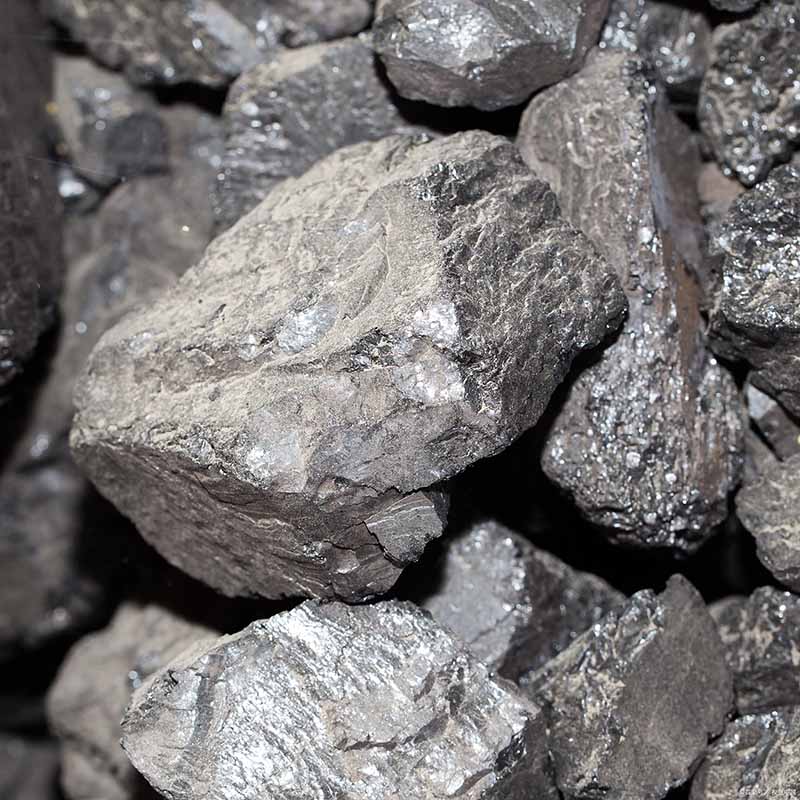
1. Is cast iron magnetic?
Most cast irons are magnetic, but there are also non-magnetic cast irons (weakly magnetic). Whether cast iron is magnetic or not mainly depends on the alloy composition and heat treatment process of the cast iron.
(1). Why are most cast irons magnetic?
The fundamental reason why cast iron is magnetic is its main chemical component - iron (Fe).
Iron is a ferromagnetic material:
pure iron itself has strong ferromagnetism, which means that it is easily attracted by magnets and can also be magnetized.
The main components of cast iron:
Cast iron is an alloy of iron (Fe), carbon (C) and silicon (Si), with a high carbon content (usually greater than 2%). Although carbon and other elements are added, the iron matrix still occupies an absolute dominant position, thus retaining the ferromagnetic properties of iron.
Common cast iron types:
Most of the cast iron we see in our daily lives, such as engine blocks, machine tool bases, cast iron pots, radiators, sewer pipes, etc., are gray cast iron. The carbon in this type of cast iron mainly exists in the form of graphite flakes, but its metal matrix is still pearlite or ferrite, both of which are ferromagnetic.
Therefore, if you use an ordinary magnet to attract common cast iron products, the magnet will be able to firmly attract them.
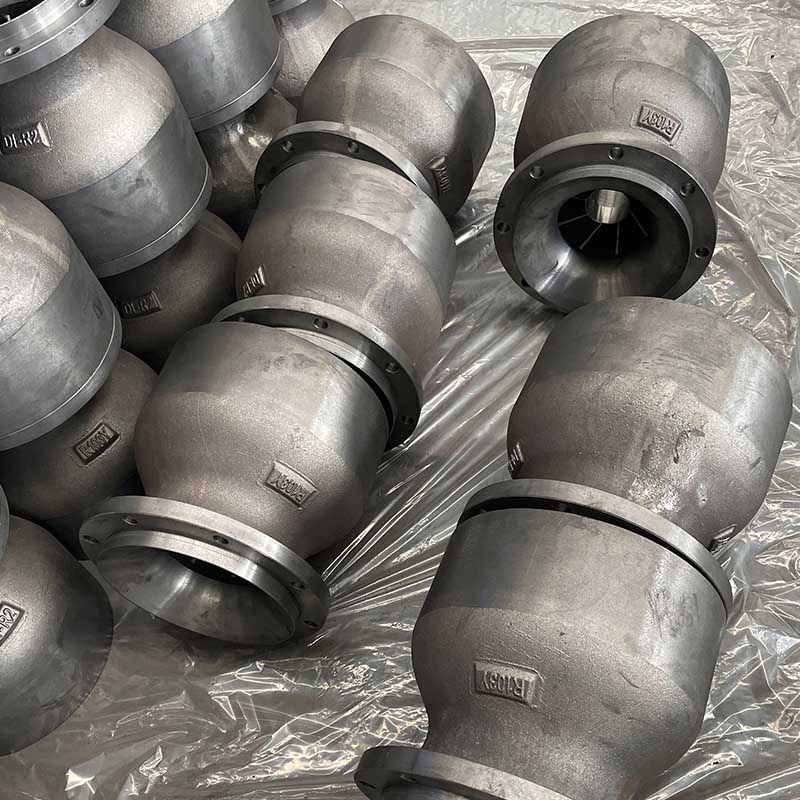
(2). Is there any non-magnetic cast iron?
Yes, it does. This mainly depends on the alloy composition and heat treatment process of the cast iron.
When cast iron is alloyed with large amounts of alloying elements such as nickel (Ni), chromium (Cr), and manganese (Mn), and subjected to special heat treatment, its internal metal matrix structure transforms from ferromagnetic pearlite or ferrite to non-magnetic (or weakly magnetic) austenite.
The most typical non-magnetic cast iron is:
Austenitic Cast Iron:
This type of cast iron typically contains high levels of nickel (such as Ni-Resist cast iron) or manganese.
These alloying elements stabilize the austenite structure, allowing it to maintain its austenitic structure even at room temperature.
Austenite is paramagnetic, meaning it responds very weakly to magnetic fields and cannot be attracted by ordinary magnets.
Main Applications: Due to its excellent corrosion resistance, heat resistance, and non-magnetic properties, austenitic cast iron is commonly used in chemical pumps and valves, food industry equipment, and components that need to avoid magnetic interference in strong magnetic fields.
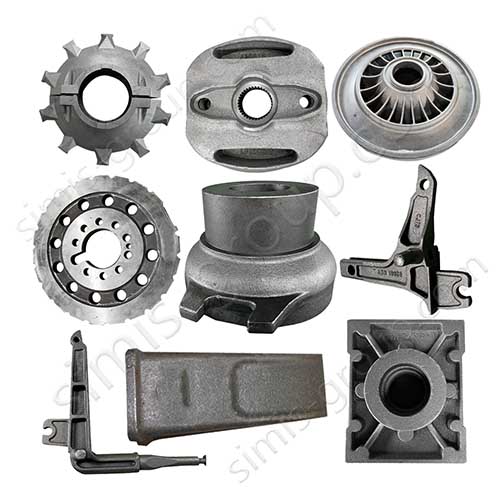
(3). Magnetic properties of Different cast iron
(1). Magnetic properties of gray cast iron
The flake graphite in gray cast iron destroys the continuity of the ferrite matrix and hinders the movement of magnetic domains. Its relative magnetic permeability is usually between 200-400, which is much lower than the 5000 of pure iron. The larger and more numerous the graphite flakes, the lower the magnetic permeability. Gray cast iron has a high coercive force (80-160 A/m) and large hysteresis loss, making it unsuitable for use in alternating magnetic fields.
(2). Magnetic properties of ductile iron
The spherical graphite in ductile iron has a small breaking effect on the matrix, and the magnetic properties are significantly improved. The relative magnetic permeability of ferritic ductile iron can reach 800-1200, and the coercive force is reduced to 40-80 A/m. The magnetic properties can be further improved by optimizing the spheroidization rate and matrix structure. Pearlite ductile iron has a low magnetic permeability and a high coercive force due to the presence of cementite.
(3). Magnetism of special cast irons
Austenitic cast iron (such as high nickel austenitic cast iron) is paramagnetic at room temperature, with a magnetic permeability close to 1 and good non-magnetic properties. The white layer on the surface of chilled cast iron has high coercivity and remanence, is wear-resistant but has poor magnetic properties.
2. Is cast steel magnetic?
Most commonly used cast steels are strongly magnetic, but like cast iron, by adjusting the alloy composition and performing specific heat treatments, the microstructure of the steel can be changed, thereby making it lose its magnetism.
(1). Why are most cast steels strongly magnetic?
The essence of cast steel is steel castings. The source of its magnetism is similar to that of cast iron, but the reason is more pure:
The core component is iron (Fe):
Steel is an alloy with iron as the main element. Pure iron itself is a typical ferromagnetic material.
Stable structure at room temperature:
The microstructure of ordinary carbon steel and low alloy cast steel at room temperature is mainly ferrite and pearlite. Both structures are ferromagnetic.
Magnetic manifestation:
Therefore, most steel castings seen in daily life, such as gears, shafts, anchors, railway switches, building structures, etc. of heavy machinery, can be firmly attracted by magnets.
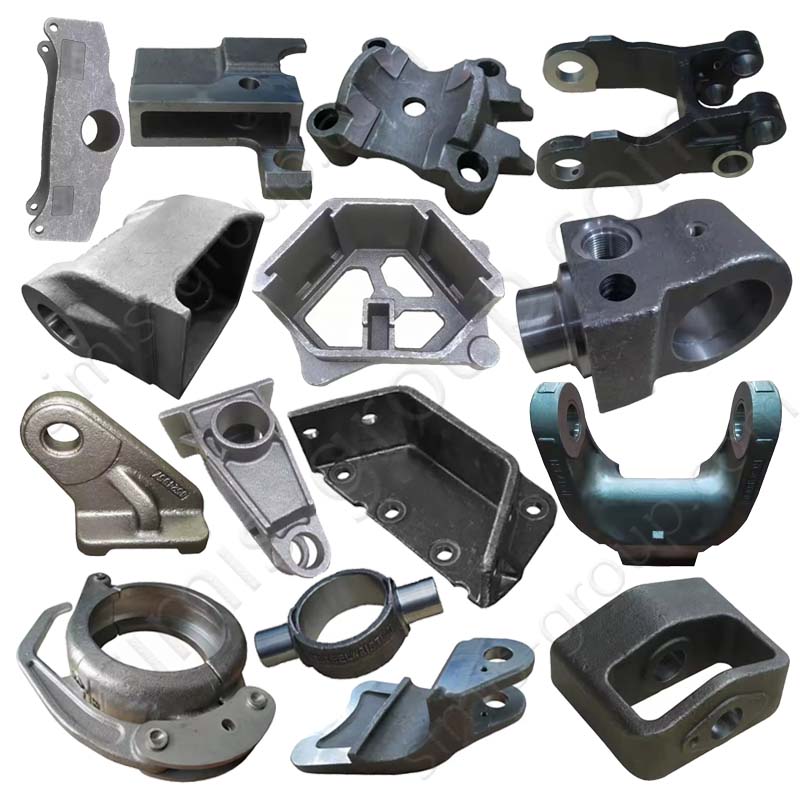
(2). Is there any non-magnetic cast steel?
Yes, by adjusting the alloy composition and performing specific heat treatment, the microstructure of the steel can be changed, making it lose its magnetism.
The most typical example is:
Austenitic Stainless Steel Castings:
Representative grades: CF8 (equivalent to forging 304) and CF8M (equivalent to forging 316) are the two most common ones.
The role of alloying elements: This type of cast steel contains a high proportion of chromium (Cr) and nickel (Ni) (usually nickel content >8%). Nickel can stabilize the "austenite" structure, allowing it to be maintained from high temperature to room temperature.
Austenite is paramagnetic, meaning it responds very weakly to applied magnetic fields. Ordinary magnets cannot attract it, or only experience very weak attraction (due to the presence of small amounts of magnetic phases).
Main Applications: Due to its excellent corrosion resistance and non-magnetic properties, it is widely used in chemical pumps and valves, food processing equipment, medical instruments, and components that must avoid magnetic interference in strong magnetic fields (such as around MRI scanners).
High Manganese Steel Castings:
Representative Grade: X120Mn12 (Wear-Resistant Steel)
Characteristics: This steel also contains a high amount of manganese (Mn), which is also an austenite-stabilizing element, causing it to form an austenite structure at room temperature, making it non-magnetic.
Main Applications: Utilizing its non-magnetic properties and extremely wear- and impact-resistant properties, it is commonly used in mining machinery, track shoes, railway switches, and other applications.
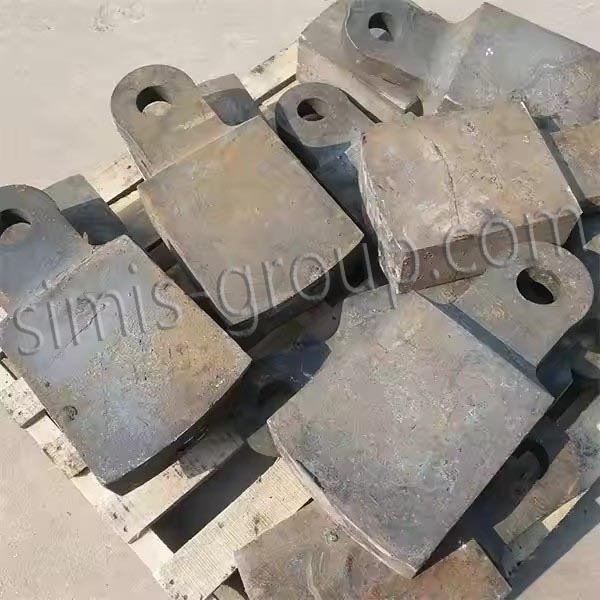
(3). Magnetic Properties of Cast Steel
1. Magnetic Properties of Carbon Steel Castings
Low-carbon cast steel exhibits excellent soft magnetic properties, with relative magnetic permeabilities reaching 1500-2000. As the carbon content increases, the amount of cementite increases, the magnetic permeability decreases, and the coercivity increases. Normalized steel castings exhibit a more uniform structure and better magnetic properties than as-cast steel.
2. Magnetic Properties of Alloy Cast Steels
Silicon steel castings (containing 2.5-4.5% silicon) exhibit excellent soft magnetic properties, high magnetic permeability, and low iron loss, making them ideal for motors and transformers. Chromium-molybdenum steel castings maintain moderate magnetic permeability while improving strength and heat resistance. High-manganese steel (Hadfield steel) undergoes magnetic property changes after work hardening.
3. Magnetic Properties of Stainless Steel Castings
Martensitic stainless steels (such as CA15) are ferromagnetic and have high magnetic permeability. Ferritic stainless steels are also ferromagnetic. Austenitic stainless steels (such as 304 and 316) are typically non-magnetic or weakly magnetic, but cold working can induce a martensitic transformation, which can lead to magnetism. Duplex stainless steels have magnetic properties that lie somewhere in between.
3. Essential Differences in the Magnetic Properties of Cast Iron and Cast Steel
The magnetic differences between cast iron and cast steel primarily stem from differences in their chemical composition and microstructure. Cast iron typically contains a higher carbon content (2.5-4.0%), primarily in the form of graphite, while cast steel has a lower carbon content (0.1-0.5%), present as cementite. This fundamental difference leads to significant differences in their magnetic properties.
Microstructurally, the graphite morphology (flakes, globules, or vermicular) in cast iron disrupts the continuity of the ferrite matrix, hindering the movement of magnetic domains. Cast steel, on the other hand, has a more uniform matrix structure, providing a better path for magnetic domain movement. This structural difference results in cast steel generally having higher magnetic permeability and lower coercivity.
4. Key Factors Affecting the Magnetic Properties of Cast Iron and Cast Steel
(1).Influence of Chemical Composition
Increasing carbon content reduces magnetic permeability and increases coercivity. Silicon increases resistivity and reduces eddy current losses. Impurity elements such as phosphorus and sulfur are generally detrimental to magnetic properties. Alloying elements affect magnetic properties by changing phase composition and distribution.
(2). Influence of Microstructure
Ferrite exhibits the best soft magnetic properties, with high permeability and low coercivity. Cementite within pearlite is a hard magnetic phase that reduces permeability. Austenite is a non-magnetic phase. The morphology, size, and distribution of graphite play a decisive role in the magnetic properties of cast iron.
(3). Influence of Heat Treatment
Annealing relieves casting stresses and improves magnetic properties. Normalizing refines the microstructure and increases magnetic permeability. Quenching produces martensite, significantly increasing coercivity. Tempering temperature and time influence carbide precipitation and magnetic property recovery.
(4). Influence of Casting Process
Cooling rate affects graphite morphology and matrix structure, thereby affecting magnetic properties. Variations in wall thickness lead to structural inhomogeneities, resulting in anisotropy in magnetic properties. Casting defects (such as shrinkage and porosity) can disrupt the continuity of the magnetic circuit.
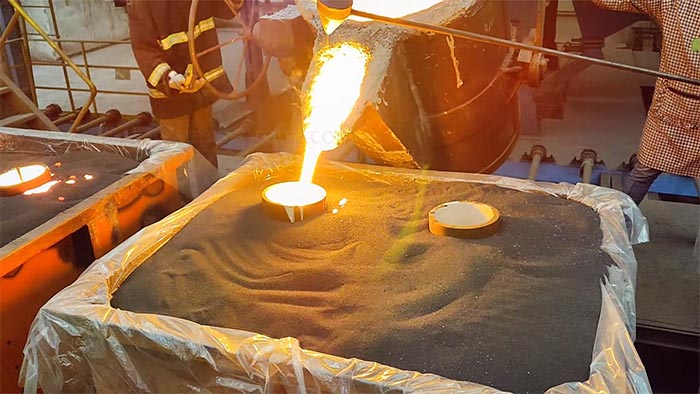
5. Magnetic Testing and Characterization Methods
(1).Conventional Magnetic Testing
Magnetic weighing is used to distinguish ferromagnetic from non-magnetic materials. Magnetic particle testing utilizes the magnetic properties of materials for non-destructive testing. Flux meters measure magnetic flux density for quality control and material grading.
(2). Standard Magnetic Property Testing
DC magnetization curves and AC iron losses are measured using Epstein square or ring specimens. Vibrating sample magnetometers (VSMs) measure saturation magnetization and coercivity. Impedance analyzers measure high-frequency magnetic properties.
(3). Microscopic Magnetic Structure Analysis
Kerr magnetic optical microscopy observes magnetic domain structure. Lorentz transmission electron microscopy investigates nanoscale magnetic structures. Atomic force magnetic microscopy provides nanometer-level resolution of surface magnetic properties.
6. Magnetism in Cast Iron and Cast Steel in Engineering Applications
1. Electromagnetic Equipment Applications
Motor and transformer cores require high magnetic permeability and low iron loss, and silicon steel or low-carbon steel castings are typically used. Electromagnetic chucks and magnetic separation equipment require high saturation magnetization, and low-carbon cast steel is often used. Magnetic shielding devices require a certain magnetic permeability and saturation magnetization.
2. Mechanical System Applications
Gearboxes and transmission systems need to consider the effects of magnetic properties on lubrication and wear. Non-magnetic tools and equipment use austenitic cast iron or stainless steel castings. Precision instrument bases require materials with magnetic stability.
3. Special Environment Applications
Nuclear power plant equipment requires materials with low cobalt content and stable magnetic properties. Medical equipment (such as MRIs) requires non-magnetic materials. The aerospace industry has strict standards for the magnetic properties of materials.
4. Magnetic Influences During Processing
Welding and heat treatment may alter local magnetic properties. Stress generated by machining affects magnetic properties. Temperature fluctuations during use may alter magnetic properties.
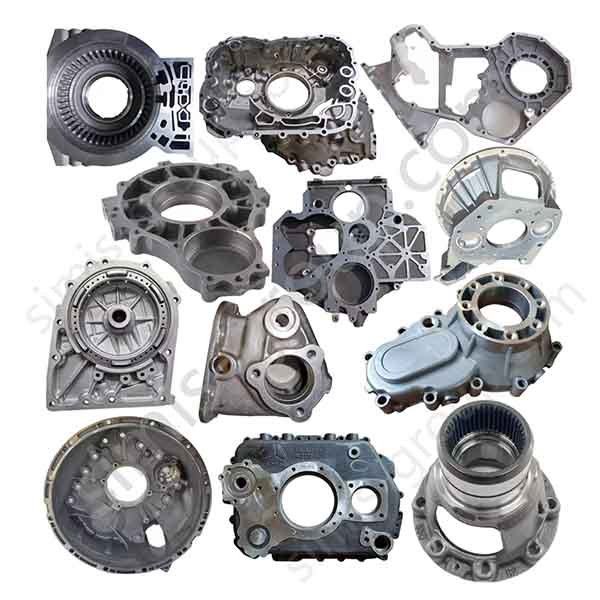
7. China Simis Group: Your Top Metal Casting Solutions Partner
In today's highly competitive industrial world, it's crucial to have a foundry partner who can accurately understand your needs and deliver reliable, customized products. Simis specializes in providing comprehensive custom manufacturing services for cast iron and steel parts, from material selection to process implementation.
(1). Precise Material Selection:
Simis offers a comprehensive material portfolio to meet diverse needs, from general-purpose parts to critical core components:
Cast Iron Series:
·Gray Cast Iron:
Offers excellent vibration damping and wear resistance, is cost-effective, and is widely used in machine tool bases, engine blocks, brake discs, and other applications.
·Ductile Iron:
Combining the processability of cast iron with strength and toughness approaching that of steel, it is an ideal choice for piping systems, gears, crankshafts, and heavy machinery components.
·Corrosion/Heat-Resistant Cast Iron:
Specially alloyed, it's tailored for high-temperature, corrosive environments (such as the chemical and metallurgical industries).
Steel Castings:
·Carbon Steel Castings:
High strength and toughness, suitable for heavy-load and shock-load environments, such as mining machinery, gears, and couplers.
·Low-Alloy Steel Castings:
Strengthened by alloying elements, they exhibit superior mechanical properties and are used in power generation, wind power, and pressure vessel components.
·Austenitic Stainless Steel Castings:
Excellent corrosion resistance and non-magnetic properties make them an absolute top choice for food processing, chemical pumps and valves, medical, and marine engineering.
Our materials engineers will work closely with you to recommend the optimal material solution based on your application (e.g., load conditions, operating temperature, media environment, wear/corrosion resistance requirements, magnetic properties, etc.) to optimize performance and cost.
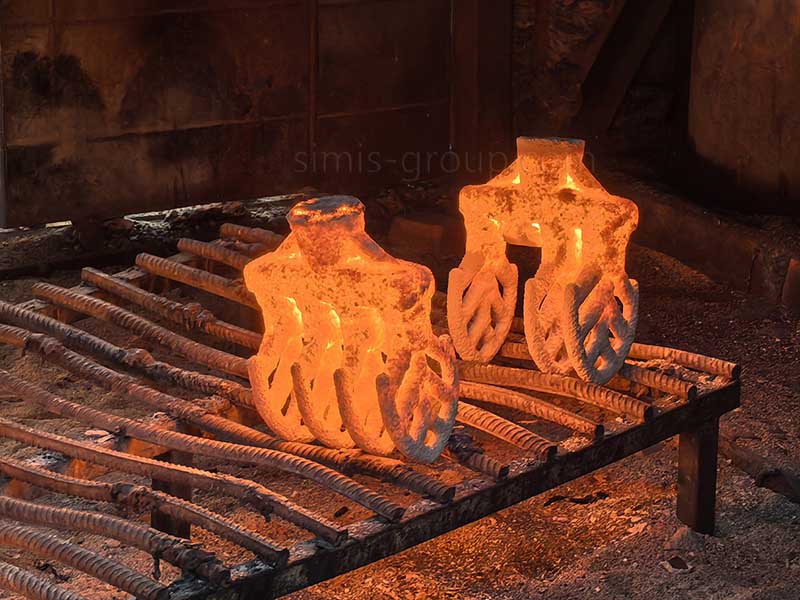
(2). Advanced Casting Processes:
Once you have the right material, meticulous craftsmanship is the key to achieving product value. Simis possesses a wide range of proven and advanced casting technologies to ensure you meet your quality, precision, and batch requirements.
Sand Casting:
Our core process is suitable for producing large and medium-sized parts, ranging from a few kilograms to tens of tons. Its exceptional flexibility makes it an ideal choice for single-piece, small-batch production or large, complex parts.
Lost Foam Casting (EPC):
Designed for complex structural parts, it eliminates the need for draft angles and parting surfaces, significantly reducing machining allowances and enabling greater design freedom.
Precision Investment Casting:
Produces near-net-shape parts with precise dimensions and smooth surfaces. It is ideal for small to medium-sized, complex shapes, and thin-walled precision components.
From process simulation to mold fabrication, from melting and pouring to precision machining, we adhere to a commitment to excellence in every step to ensure consistent and stable product quality.
Whatever your challenge—extreme operating conditions, demanding precision, or unique performance requirements—Simis has the capabilities to work with you to turn your ideas into reality.












